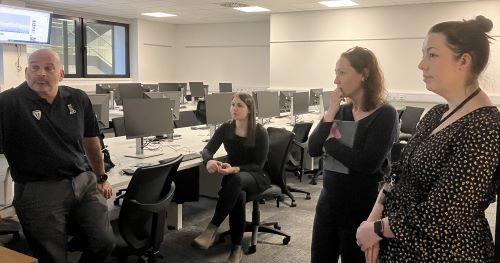On Wednesday the 27th of February, 2024, the first CEDAR meeting of the year took place in E17, on the Edinburgh Napier University Merchiston campus and simultaneously on Teams.
Two presentations were delivered by the following CEDAR members:
1 – Franziska Heck PhD candidate
“Human-Robot Interaction: Social robots as companions for students to improve well-being, to prevent/reduce loneliness.”
Franziska Heck has recently started her PhD in the field of Human-Robot Interaction at Napier.
 She wants to investigate whether social robots can be used as companions for students to improve their well-being and combat loneliness. She is investigating whether they can support students more effectively with interventions than digital aids such as apps or chatbots.
She wants to investigate whether social robots can be used as companions for students to improve their well-being and combat loneliness. She is investigating whether they can support students more effectively with interventions than digital aids such as apps or chatbots.
Finally, the work will provide inspiration and recommendations for improvement for the industry, for future robots and applications.
Her presentation led to interesting interactions with the audience on:
Loneliness: To what extent can social robots prevent or reduce social interactions with other people?
Methods:
– Mediation/moderation
– Experiences with recruitment and timing of experiments
– Intervention in the experiment: Are positive psychology exercises appropriate?
AI: What are the risks of AI in human-robot interaction?
2 – Lucy Downey and Prof Achille Fonzone
“Automated buses – What about their passengers?”
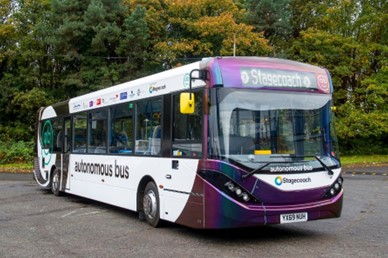 Professor Achille Fonzone and Dr Lucy Downey, from the Transport Research Institute at Edinburgh Napier, presented the CAVForth Autonomous Bus Project.
Professor Achille Fonzone and Dr Lucy Downey, from the Transport Research Institute at Edinburgh Napier, presented the CAVForth Autonomous Bus Project.
The primary objective of the project is to deliver an autonomous (self-driving) scheduled passenger service with Stagecoach East Scotland, carrying up to 10,000 passengers per week along a 28-mile route between Edinburgh and Fife, across the Forth Road Bridge.
The Napier team is one of six partners on the project and is responsible for monitoring societal acceptance of autonomous vehicles on Scotland’s roads.
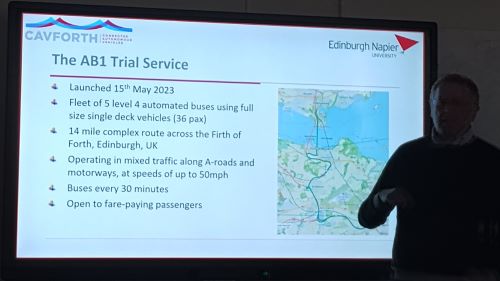
A mixed-method approach is used with online surveys and focus groups, structured interviews and stakeholder consultations.
Stakeholder consultation show:
The stakeholders see benefits in the social (road safety) and economic (financial savings and network performance) aspects; and risks in the social aspects (road safety) and technology (AB performance and reliability).
The pre-trial passengers’ replies show:
Less than a quarter considered themselves well informed about autonomous buses.
49.3% would use autonomous buses at the time of their introduction or shortly afterwards. 27.2% would wait a while. 16.2% would be use them only if it was absolutely necessary and 7.2% would refuse to use them.
The most eager to use autonomous buses are young males, those living in rural areas, those who have experience with advanced driver automated systems in their cars, and those who thought the AV bus ride would be more comfortable compared to a traditional bus.
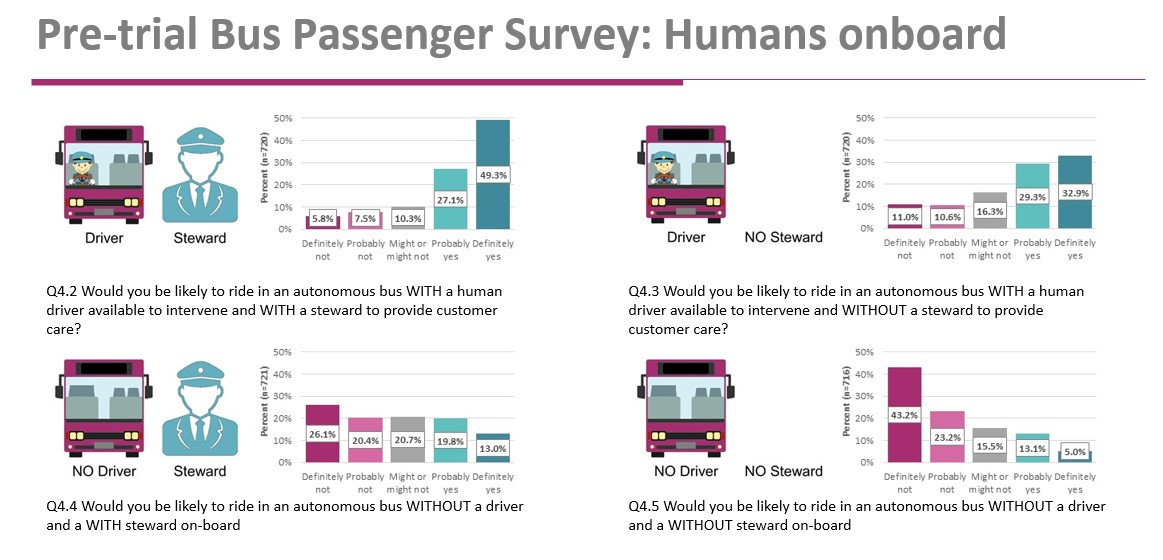 Over three-quarters (76.5%) of survey participants expressed a willingness to ride when a member of staff is on board to monitor vehicle operations and provide customer care. Very few, less than a fifth, would agree to ride in a bus without an employee on board.
Over three-quarters (76.5%) of survey participants expressed a willingness to ride when a member of staff is on board to monitor vehicle operations and provide customer care. Very few, less than a fifth, would agree to ride in a bus without an employee on board.
The bus passengers’ replies show:
The majority of passengers agreed the bus was driven well (95%) in a safe manner (95%) and the ride was smooth (86%).
Focus Groups with passengers showed:
- Mostly very positive feedback
- Excited to see technology deployed in a real world setting & on their ‘doorstep’
- AB1 ride was generally comfortable
- Did not perceive the experience as different from a conventional bus (except for bus captains, seatbelts + harsh)
Findings from structured interviews with the drivers showed:
- Supervising an AV Bus requires much higher levels concentration compared to manual driving;
- They trust the system, it’s reliable, easy to take-over if needed
- Service could be improved by less harsh braking, making more of the route autonomous, improving waiting facilities at Edinburgh Park, and more passengers
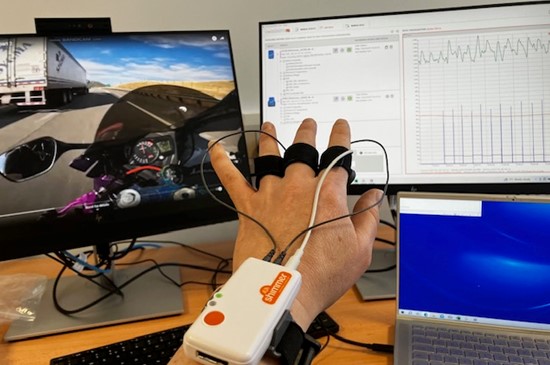 Further research is ongoing including onboard passenger surveys and comfort measurements.
Further research is ongoing including onboard passenger surveys and comfort measurements.
News:
- The principal came to see the CEDAR lab. If you want to see the lab, have a look at Ian Cunningham’s videos using his 360-degree approach: https://www.youtube.com/watch?v=9PsjYNNtizg; https://www.youtube.com/watch?v=SCGn0t_h2fU.
Or get in touch with Marina or Chris Gillespie to arrange a visit.
- Welcome to Franziska Heck, Joanna Aldhous, and Frauke Zeller, new CEDAR members! It’s wonderful to have you on board!
- The next CEDAR meeting will be held on the 26th March from 3:30pm-5pm in E17 in Merchiston or on Teams.
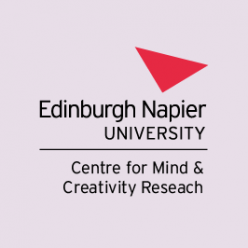
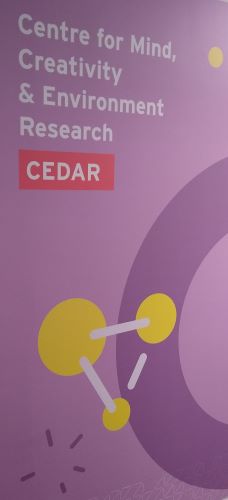
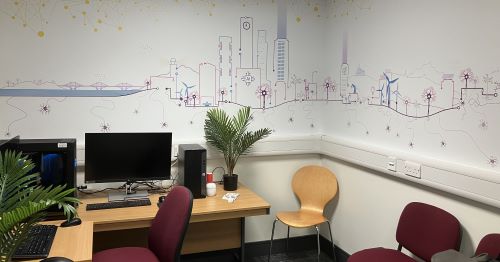

 “This has been a truly exciting opportunity to be able to develop a laboratory space from an interdisciplinary perspective and encapsulate the interdisciplinarity in both the laboratory equipment and the design of the space itself”.
“This has been a truly exciting opportunity to be able to develop a laboratory space from an interdisciplinary perspective and encapsulate the interdisciplinarity in both the laboratory equipment and the design of the space itself”.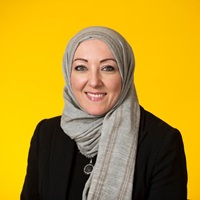 “It has been a delight collaborating with Dr Marina Wimmer as a co-lead of this unique research centre which not only creates fantastic opportunities for colleagues from various Schools across the University and beyond to explore issues related to Mind, Creativity and the Environment but also has a physical space with state of the art equipment to facilitate interdisciplinary research projects.”
“It has been a delight collaborating with Dr Marina Wimmer as a co-lead of this unique research centre which not only creates fantastic opportunities for colleagues from various Schools across the University and beyond to explore issues related to Mind, Creativity and the Environment but also has a physical space with state of the art equipment to facilitate interdisciplinary research projects.”
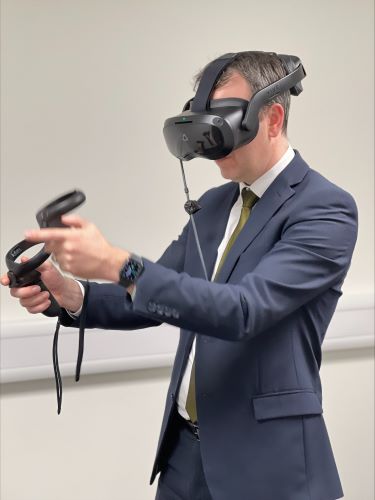

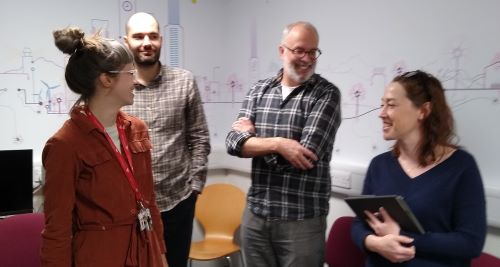
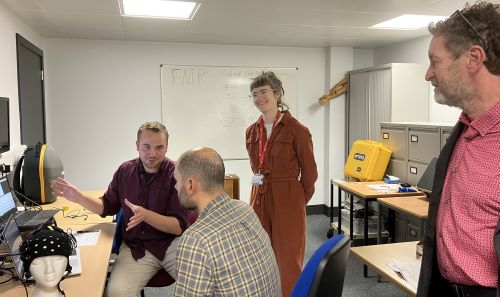
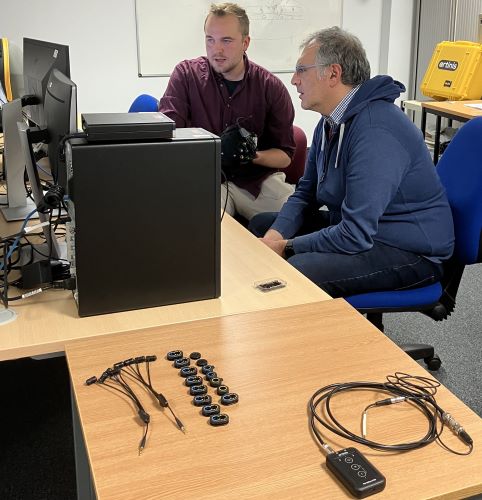
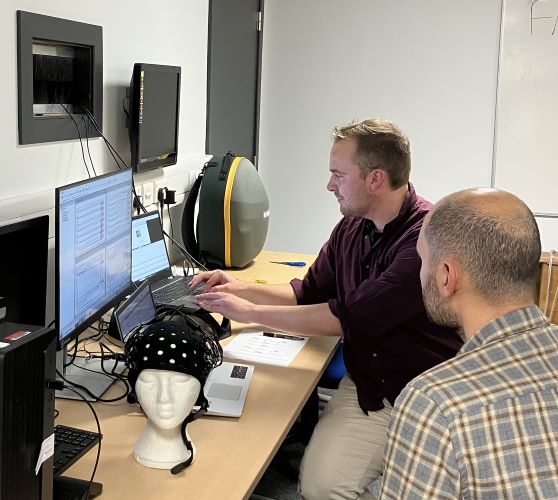

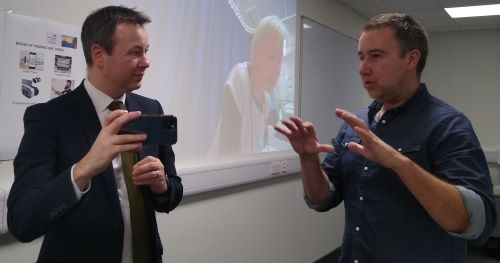 Ian explained 360° video, also called immersive videos or spherical videos, provides a multi-directional image from a stationary or mobile, first-person perspective.
Ian explained 360° video, also called immersive videos or spherical videos, provides a multi-directional image from a stationary or mobile, first-person perspective.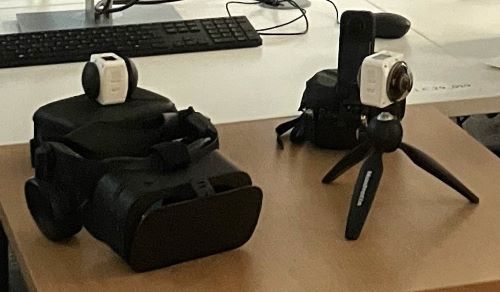 360 ° videos are recordings of the real-world environment in which a view in every direction is recorded at the same time by using a specific camera with a fish-eye lens.
360 ° videos are recordings of the real-world environment in which a view in every direction is recorded at the same time by using a specific camera with a fish-eye lens. The video uploaded on YouTube is accessible to the users by scanning a QR code with a mobile phone. And with a VR headset, people can live a real-life experience and rediscover their practice or activity.
The video uploaded on YouTube is accessible to the users by scanning a QR code with a mobile phone. And with a VR headset, people can live a real-life experience and rediscover their practice or activity.
